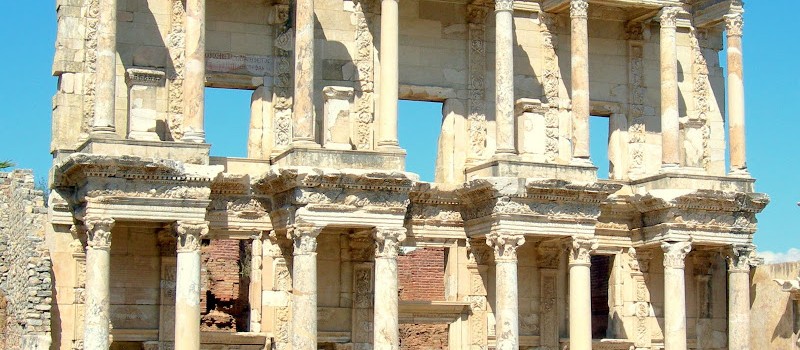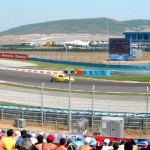Evening Journey of Kusadasi
Later I headed to the city centre where one finds shops open till lateevening and at times till the wee hours of the morning. It is in the evening that the city comes to life and the restaurants serve some of the local Aegean specialities including fresh seafood. You can then burn your calories dancing away at any of the bars or lounges which are open till the wee hours of the morning.
The following day, I joined the tour to Efes or Ephesus which is one of the best preserved ancient cities on the Eastern side of the Mediterranean. The day long tour comprised of visiting the ruins as well as the House of Virgin Mary, where she is believed to have spent her last few years,located at the Bulbul Mountains, Selçuk, which is a few kilometers away from Ephesus.
Ephesus was our first stop and here you find several acres of carefully excavated ruins which present an unparalleled recreation of ancient splendour. Ephesus once had over 250000 inhabitants and to appreciate these magnificent ruins you need the entire day. There are some fine sites which stand out in the city of Ephesus and this includes the Celsus Library and the Grand Roman amphitheatre where concerts are performed during the annual Efes festival till date. The city of Ephesus itself was founded around 3000 BC by the Amazons and it was around 1000 BC that it became a Greek Colony.
The city became famous for its science, technology and wealth and its popularity spread in the surrounding area extending to the famous Temple of Artemis, one of the seven wonders of the ancient world.
Alexander the Great entered Ephesus in 334 BC and this period was known as the Golden Age of Ephesus. After Alexander’s death, the city was ruled by one of his Generals and later in 130 BC, the city was annexed to the Roman Empire under the reign of Emperor Augustus and most of the remains seen today belong to the Roman Empire.The excavation of this city started around 130 years ago.The statues here in Ephesus are copies as the originals were taken to Austria.The other highlights of Ephesus include the Trajan Fountain, Memmius Monument, Hadrian Temple, Houses of the Slopes, Hercules Gate, Domitian Temple and the Pollio Fountain.
After the city of Ephesus, we stopped at the location of the Artemis Temple which was one of the wonders of the ancient world. The foundation stone of the temple was laid around 7th Century BC. It was built in honour of the Greek goddess of hunting, wild nature, and fertility and was in fact the most beautiful structure on earth and therefore included amongst the seven wonders of the ancient world. On the night of 21st July 356 BC, a man named Herostratus burned the temple to the ground in an attempt to immortalize his name.
On the same night itself, Alexander the Great was born. Later, when Alexander the Great conquered Asia Minor, he offered to rebuild the destroyed temple, but the Temple was not restored until after his death in 323 BC. The final chapter came when in AD 401 the Temple of Artemis was torn down by St John Chrysostom. Ephesus was later deserted, and only in the late nineteenth century has the site been excavated. The digging revealed the temple’s foundation and the road to the now swampy site. Attempts were recently made to rebuild the temple, but only a few columns have been re-erected.
After the Artemis Temple our next stop was at the House of Virgin Mary which will be featured in the next travel diary of Namaste Turkey.




